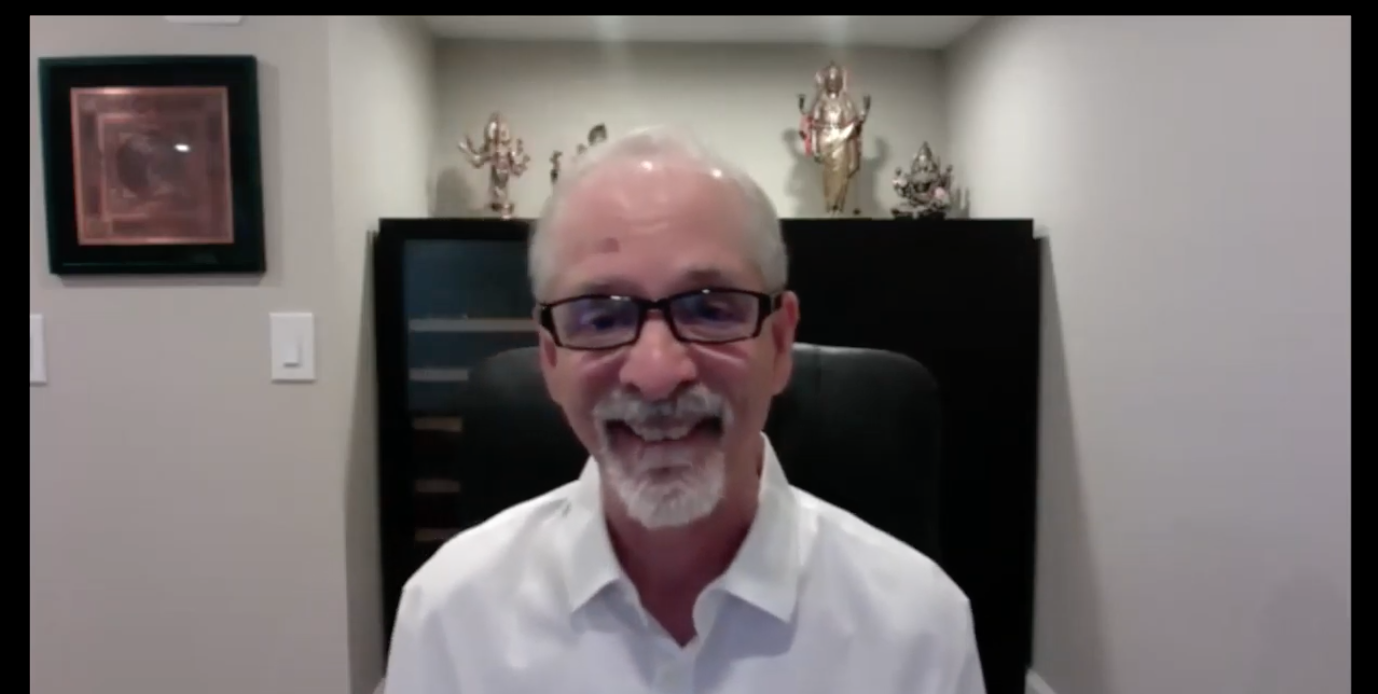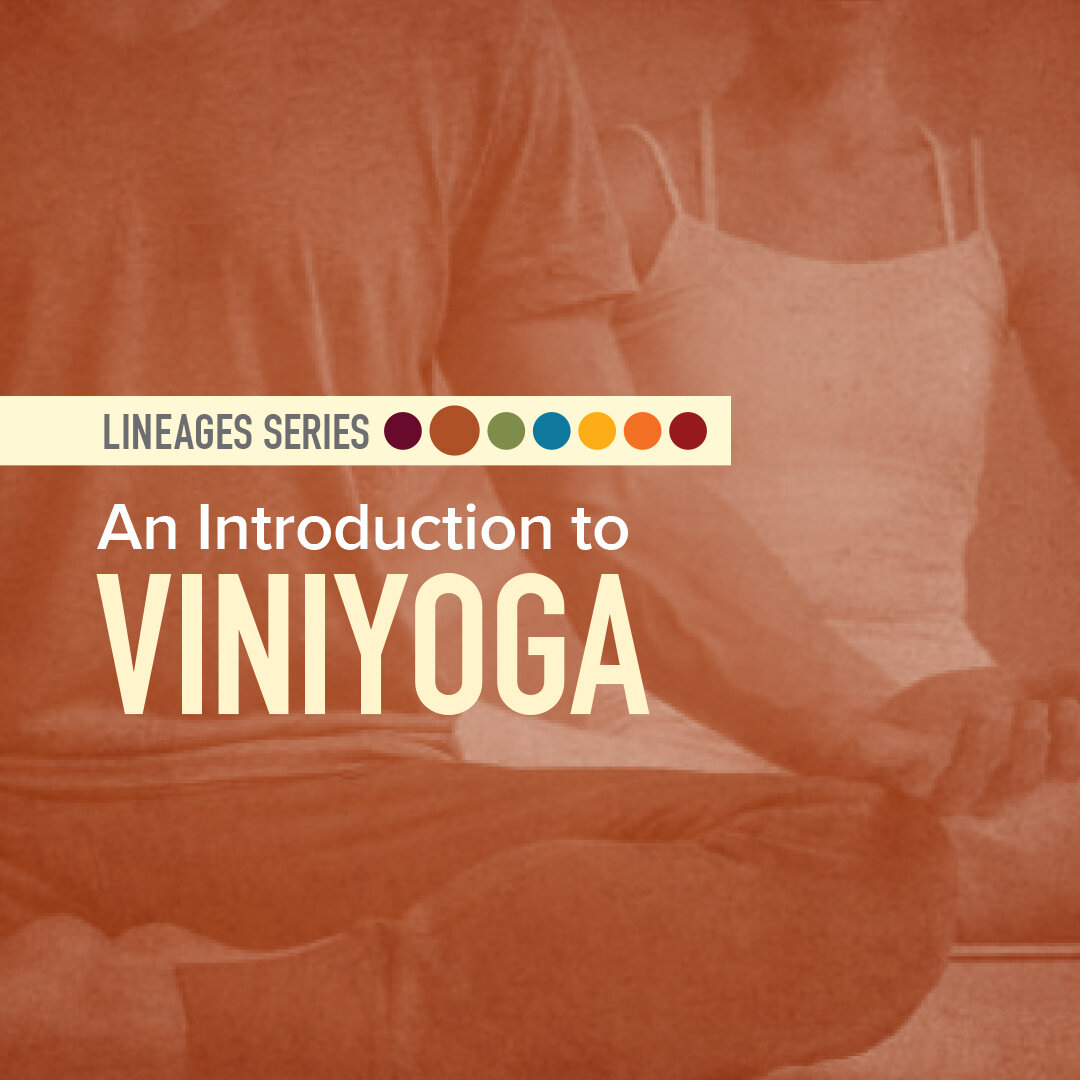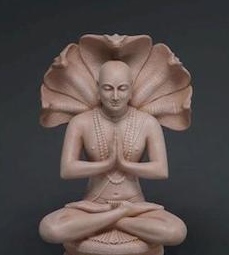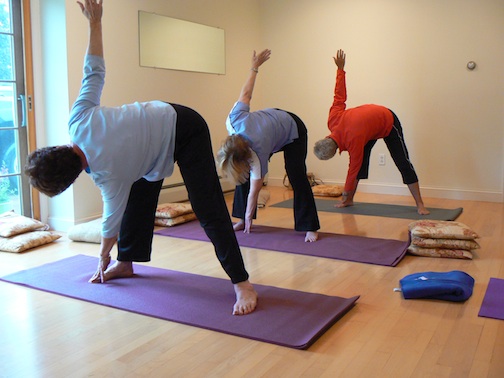Viniyoga: Yoga Designed for Everyone’s Unique Body and Mind

In An Introduction to Viniyoga, Kim and Gary Kraftsow, Founder and Director of the American Viniyoga Institute, discussed the origins and modern-day story of Viniyoga, Kraftsow’s path to teaching, which started in India when he was 19, and what a Viniyoga class looks like (spoiler alert: Their mantra is “It depends on the student!”). Viniyoga, like Iyengar Yoga and Ashtanga Yoga, traces its roots to Krishnamacharya, a scholar who had immense knowledge of yoga and the Ayurvedic tradition.
Gary Kraftsow’s own yoga journey began in 1974 when he was a religious studies student in Madras, India. He took courses with T.K.V. Desikachar, the son of Krishnamacharya. Kraftsow absorbed Krishnamacharya’s teachings through Desikachar and brought them to the west.
Gary Kraftsow mostly taught asana classes to start, but he later went back to Madras to study physiology for yoga therapy. Several years later, he returned to Madras again to study more about meditation. This continued study allowed him to begin to work on progressively deeper levels with his students. We found it so interesting that Kraftsow’s approach has so clearly gone from the gross/physical to the subtle.
Viniyoga (prefixes ‘vi’ and ‘ni’ plus yoga) is an ancient Sanskrit term that implies differentiation, adaptation, and appropriate application. The practice of Viniyoga stems from the Vedic teachings, which center on dharma. Kraftsow defined dharma as how each of us fulfills our responsibilities to ourselves, to each other, to the universe, and to the divine. Each person has a different calling, and we have dharma in three ways:
Tapas—disciplines that we do to care for ourselves on a multidimensional level
Dana—charitable disposition; to serve our families, communities, and society
Yajna —worship or devotion; how we fulfill our responsibilities to the greater universe and to the divine
“In Viniyoga, the goal of the teacher is to help students find their own svadharma, or their interpersonal truth or walk. ”

In Viniyoga, the goal of the teacher is to help students find their own svadharma, or their interpersonal truth or walk. The teacher does this by helping students understand their unique needs and interests, and then by helping them adapt the tools to serve these needs and interests on the multidimensional level as Viniyoga defines this. Although the teaching is to adapt to the individual, Viniyoga does understand that there are some needs common to every student that teachers should address, such as stabilizing the low back and helping to relieve tension in the neck and shoulders.
A typical Viniyoga class depends on the interest of the teacher. Teachers are trained sequentially in asana, pranayama, and then in meditation, but they may choose to focus on just one area or do a combination of the three. Chanting may be used in any or all of the three disciplines. Asana classes are more breath-centric than form-centric, focusing on the relationship between the flow of breath and the movement of the spine. Furthermore, asana prepares the breath for pranayama, pranayama prepares the mind for meditation, and meditation prepares the heart for prayer.
I learned so much in this event and found myself stopping and starting the recording repeatedly to go back and listen to sections a second or even third time. Gary shared so much knowledge and wisdom from his experience, and I found myself wishing the webinar was longer than an hour because he had so many powerful things to say.
“Make sure you understand what you’re teaching. Teach what you know, and share from your heart and with your own passion how yoga has served you. And your teaching will deepen as your practice deepens, as your own experience deepens.”
— GARY KRAFTSOW
In the second event, Viniyoga Practice, Gary Kraftsow led an integrated Viniyoga class, which included asana, visualization, pranayama, and meditation with chanting practice. Kraftsow taught while Bernadette Soler, a graduate of American Viniyoga teacher training and yoga therapy, demonstrated. (For more information on both Bernadette and Viniyoga, check out Bernadette and Kim’s recent Instagram live conversation on Kim’s Instagram handle!) Afterward, Kim described the class by saying, “It’s like a Shamanic journey that you took us on.”
This class was completely different from any yoga class I’ve ever taken. There was chanting during the asana, pranayama, and meditation, and this felt like a steep learning curve for me. Yet, just like with Swami Asokananda’s class, I can recognize a true master class when I take one. I also really enjoyed the meditation practice at the end, which asked students to visualize what’s most important in life and to commit to making choices in the spirit of that going forward.
Watch the free recordings of both events to learn more and to try a Viniyoga class for yourself! You can catch the next two events in the series on August 18 and 19 when Kim will discuss Kundalini Yoga with Pritpal Kaur Khalsa.
[……]


